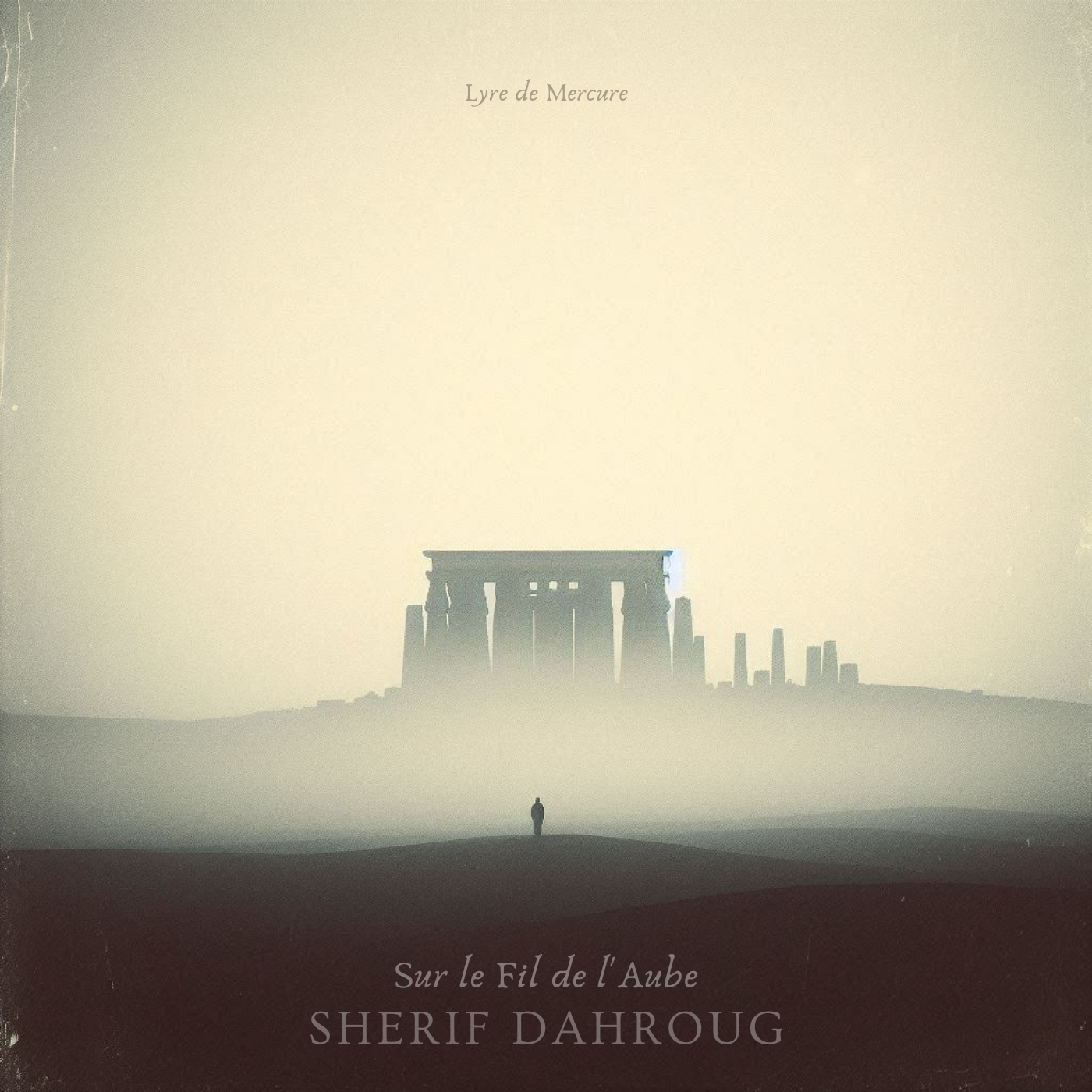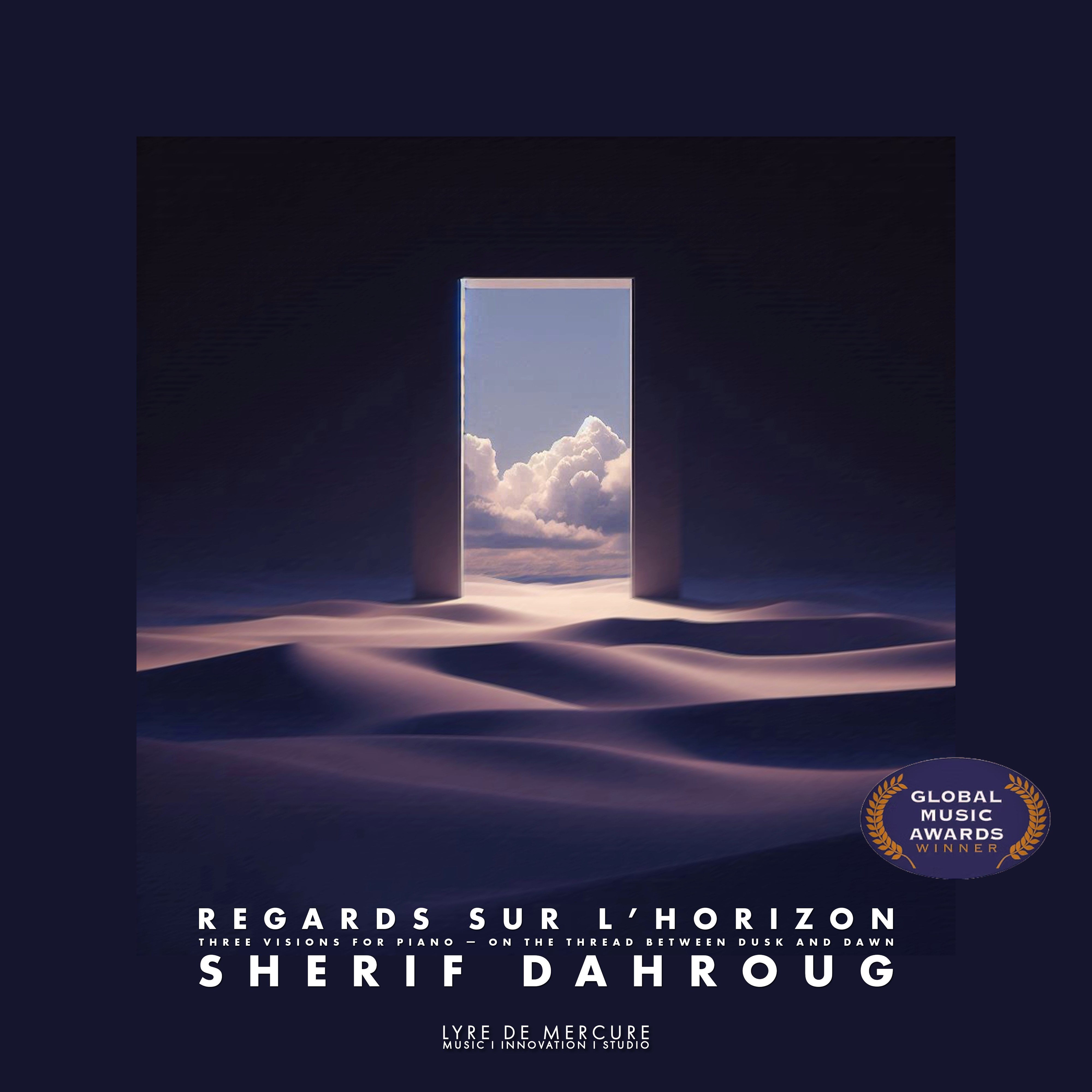Sur le Fil de l’Aube
A contemplative arc between darkness and dawn — the first breath of light over the horizon, composed and performed by Sherif Dahroug.
Listen & Credits
Best experienced on headphones — the opening threshold is deliberately intimate.
Program Note — Vision II: A Journey Between Worlds
Sur le Fil de l’Aube · On the Thread of the Dawn
Through the lens of Egyptian philosophy, Sur le Fil de l’Aube, the second vision from Regards sur l’Horizon, transcends mere reflection on time and light—it becomes an invitation to presence itself. The listener assumes the role of the silent figure at the temple gate, witnessing Ra’s ascent, hearing Ma’at in the sacred silence between notes, and experiencing dawn not as a backdrop but as a moment of revelation.
“At its core lies the eternal human impulse to walk the line between known and unknown, between yesterday and tomorrow. This figure—the mediator standing at the convergence of opposites, holding the moment steady—becomes a symbol of us all, listening at the edge of the sacred.”
Dawn is a sacred threshold, marking Ra’s daily transformation from the hidden Atum to the radiant sun disk—a moment of divine emergence. Sherif Dahroug’s composition traces this sacred arc, moving from darkness and uncertainty toward the first breath of light, creating a sonic mirror of creation itself.
Edition Artwork

